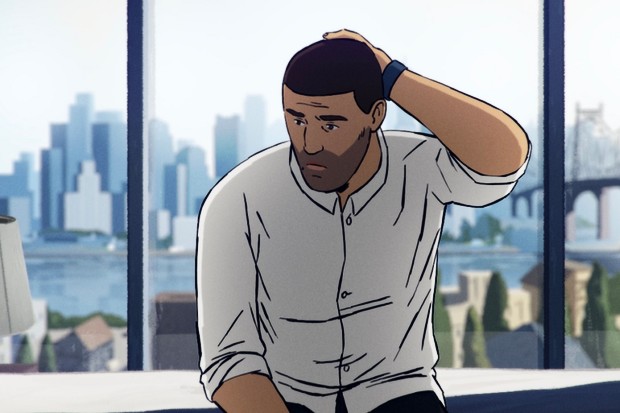The documentary Flee by Jonas Poher Rasmussen is the real story of a refugee, Amin Nawabi, who unravels his story and experiences for the first time. The usage of language, mixed media, color, interweaving the past and present and other choices makes the story extremely profound. Rasmussen effectively makes the narrative a personal experience alongside bringing awareness to the issues refugees go through and how they leave a permanent impact on their identity and wellbeing. Two tools that I found really intriguing and effective in the documentary were the incorporation of language as well as the use of mixed media.
Rasmussen chose to make the documentary multilingual and incorporated languages such as Russian, Spanish, Dari, and English to show the diversity of cultural experiences Amin was exposed to growing up. To me it served as a contrast, because many people enjoy studying and immersing themselves in different cultures and languages, and go to the same places Amin went to in order to experience the culture of a place. However, Amin was not able to appreciate the diversity and culture around him because he had bigger issues to deal with. At the beginning of the documentary, when he was reading an old diary and couldn’t read in his own language was heartbreaking, because in a way, being immersed in different cultures has made his roots distant. However, this choice helps the viewer understand that refugees have identities that come from a multitude of places, which manifest through language, food, and other parts of culture. Additionally, using audio from interviews rather than having Amin or someone else simply narrate the story is powerful. I really enjoyed it because it makes the piece more conversational and raw, and allows the viewer to fully understand Amin’s relationship with his past and present.
The story is told in a somewhat sequential order, as the film blends past experiences with the present, creating a complex structure. It’s also a composition of the news, recordings from the time, and animation. I wasn’t expecting this approach, but I was even more surprised at how smooth the transitions between the mediums were. Although all the mediums were very different, they worked together to seamlessly create a timeline and solidify the events in the viewer’s head. I associate animation with more fun purposes, such as children’s shows, and the choice of using that medium to convey such a deep message is what makes it more emotional. The usage of news and real footage adds a sense of harsh reality, and also generalizes the story to all refugees, rather than the story of one. Amin shares that “You grow up, you grow up way too fast” (1:21:25) when you go through experiences like this, and I understood the usage of mixed media to show how his childhood was consistently disrupted. Within animation, the choice of using black and white, and less distinct shapes in emotional and traumatic scenes represents how he’s uncovering a part of himself that he has kept hidden deep down, so far back that the details are fuzzy. Some examples of this are when his dad gets taken away, when he is a part of human trafficking in Russia, and when he is in a fight with his ex boyfriend, who threatens to report him. This feature also makes the story more generalized to all refugees, because almost all of them have gone through these traumatic events.

Aside from telling the story of refugees, the documentary also uncovers the faults within systems in place, such as people having to resort to human trafficking, the filth and dirt in the abandoned building they had to stay at, Amin getting an Iranian communicator in Denmark so there was miscommunication, and that the only way to get asylum was to lie about his family being dead. Although this was all upsetting, the film does have positives. Amin shares that “Getting out of Russia was a tremendous gift, I got a life” (56:08), and the film concludes with him finally sharing the burden of his story, accepting his identity, being successful in his career and in his relationship, and finally getting a home. The decision to end on a positive note leaves the audience hopeful and inquisitive, which is really powerful.

Leave a Reply